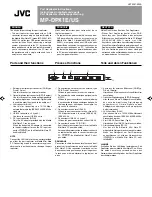
Technical Information 1-17
Memory Map
The system supports system and video shadowing, both controlled through complementary
metal oxide semiconductor (CMOS). The system supports BIOS as a cacheable area with
write protection. Table 1-2 lists the system's memory map.
Table 1-2 Memory Map
Memory Space
Size
Function
00000000h-0009FFFFh
640 KB
Base Memory
000A0000h-000AFFFFh
64 KB
Video Memory (graphics)
000B0000h-000B7FFFh
32 KB
Upper Memory Block (UMB)
000B8000h-000BFFFFh
32 KB
Video Memory (text)
000C0000h-000C9FFFh
40 KB
Video BIOS
000CA000h-000CFFFFh
24 KB
Upper Memory Block (UMB)
000D0000h-000DFFFFh
64 KB
PCMCIA Window (available as UMB in Windows '95)
000E0000h-000E7FFFh
32 KB
Upper Memory Block (option cards or UMB)
000E8000h-000EFFFFh
32 KB
Upper Memory Block (UMB only)
000F0000h-000FFFFFh
64 KB
System BIOS ROM
00100000h-02FFFFFFh
47 MB
Extended Memory
SYSTEM VIDEO
The system's LCD operates using the Chips and Technologies 65550 VGA Controller.
Video signals travel from the controller through the system's 15-pin D-SUB connector us-
ing 5 volts.
System video integrates a PCI-bus interface. The system ships with 2 MB Video RAM
(VRAM). It also supports video modes up to 1024 x 768 with 256 colors in CRT mode.
See Appendix B for a list of Video modes.
PARALLEL INTERFACE
The system's parallel interface integrates National Semiconductor’s PC87338 chip. It uses a
25-pin D-subconnector. The port is located on the system's rear panel.
The modes of operation available for a PC87338 chip are
■
compatibility mode
■
nibble mode
■
byte mode
















































